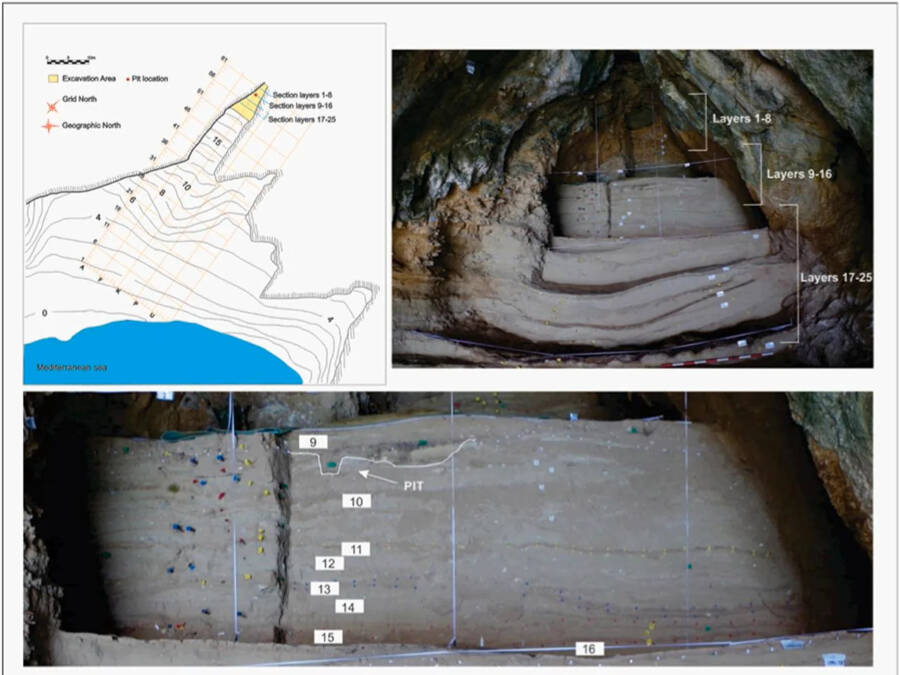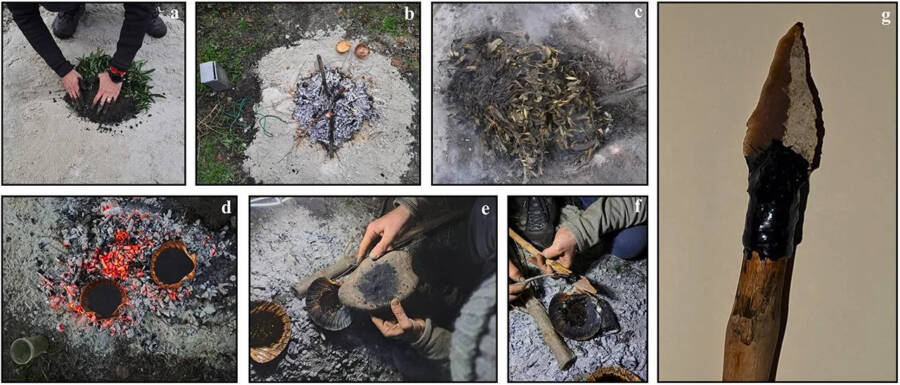A small hearth uncovered in Vanguard Cave in Gibraltar was likely part of an intricate system in which Neanderthals carefully heated rockrose leaves to extract a sticky tar they used to make weapons and tools.

Visit Gibraltar/FlickrThe entrance to Vanguard Cave where the “tar factory” was found.
Archaeologists have uncovered evidence of a 65,000-year-old Neanderthal “tar factory” in a cave in Gibraltar. A small hearth found in Vanguard Cave was seemingly once filled with plant material that was then heated to produce a sticky substance the Neanderthals used to craft weapons and tools.
Researchers successfully recreated a similar pit, confirming the effectiveness of the method. They were able to gather leaves, create the tar, and make two spears in just four hours. While some experts aren’t convinced about the purpose of the hearth, the discovery suggests that Neanderthals were actually skilled engineers.
Scientists Find Evidence Of A “Tar Factory” In Gibraltar’s Vanguard Cave
While excavating Vanguard Cave, part of the UNESCO World Heritage Site known as Gorham’s Cave complex, archaeologists recently found evidence of an intricate system Neanderthals likely used to make a glue-like substance 65,000 years ago. This “tar factory” consisted of a round pit that was nine inches across and just over three inches deep. It had vertical sides and two one-inch-long trenches extending from either side of it.
“The structure… has revealed a hitherto unknown way by which Neanderthals managed and used fire,” researchers wrote in their recently-published study in Quaternary Science Reviews.

Juan Ochando et al./Quaternary Science ReviewsA view of the excavation site in Vanguard Cave.
Further analysis of the small pit revealed the presence of guano — bird or bat poop — as well as chemicals created by burning matter and remnants of a protective wax found on the leaves of the rockrose plant.
The hearth was made 20,000 years before modern humans arrived on the Iberian Peninsula, showcasing how Neanderthals devised ingenious methods to craft the tools and weapons they used to obtain food. While archaeologists already knew that the prehistoric people used materials like tar and resin as glue, this discovery reveals that they had an elaborate process to make the substance quickly and effectively.
So, how did guano, fire, and plant leaves come together to make tar?
How Did Neanderthals Craft These Adhesive Materials?
Researchers believe Neanderthals began the intricate tar-making process by filling the hearth with rockrose leaves, which release a sticky substance when heated. They then covered the pit with a layer of wet sand to keep oxygen out, and they may have mixed in guano to create a better seal. After the leaves were covered, the Neanderthals built a small fire out of thin twigs on top of the sand.

Juan Ochando et al./Quaternary Science ReviewsAn illustration of the necessary steps Neanderthals would have performed to make the tar.
The twigs allowed them to better control the temperature of the flames, as the rockrose leaves needed to be heated to around 300 degrees Fahrenheit — but if they got too hot, they would burn to a crisp. Scientists have hypothesized that the two trenches on either side of the hearth were formed when two Neanderthals working together dug into the pit to quickly retrieve the leaves before they cooled down.
The crafters would then squeeze the rockrose to extract the sticky tar, or labdanum, and use the glue to make tools and weapons. For instance, they would have used the substance to attach flint arrowheads to spears before securing them with a wrapping of plant fiber or animal sinew.
Researchers decided to recreate the hearth to test the method. They found that they could make enough tar to craft two spears in just four hours, from collecting the leaves to attaching the arrowheads.

Juan Ochando et al./Quaternary Science ReviewsResearchers recreated the hearth to try making tar for themselves.
However, some experts argue that the findings do not conclusively prove the Neanderthals utilized the pits to make glue. Instead, the material could have been used as a perfume, medicine, or waterproofing agent.
Despite the final use of the sticky tar, however, the intricacy of the hearth suggests that Neanderthals were not only skilled craftspeople but also collaborated to accomplish complex tasks, providing valuable insight into their ingenuity and social relations.
After reading about the Neanderthal “tar factory” found in Gibraltar, learn about the Cheddar Man, a Mesolithic human who lived in Britain 10,000 years ago. Then, read about Ötzi the Iceman, the oldest preserved human ever found.





